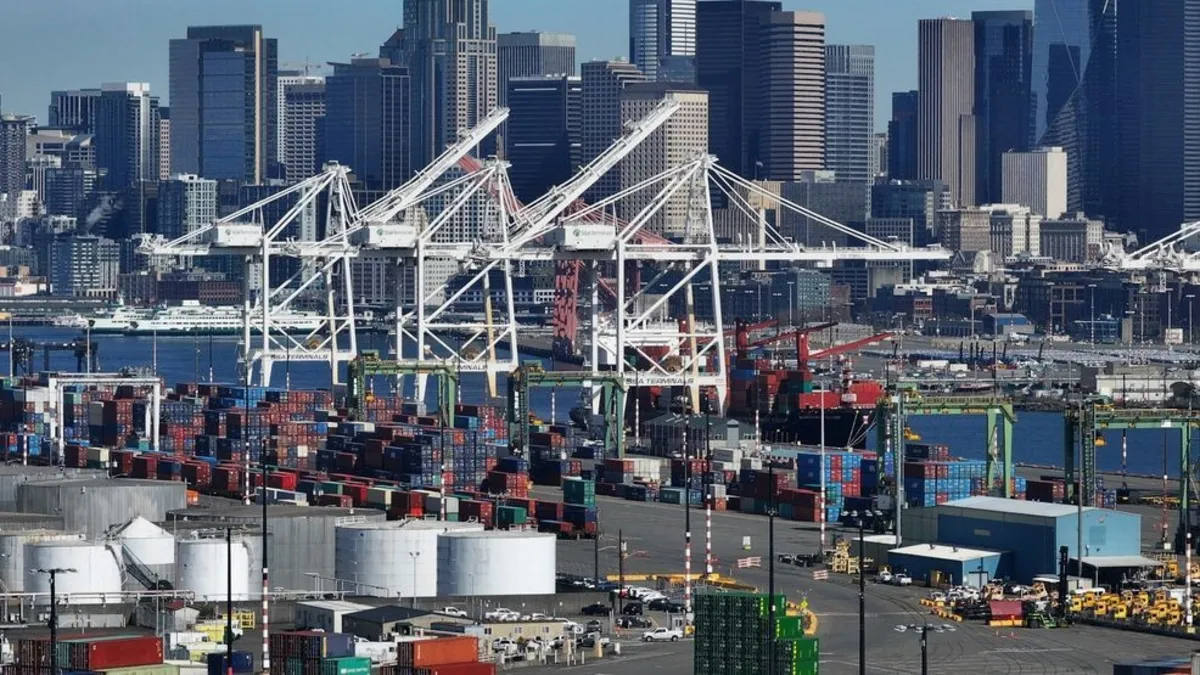
Recent trade data released on Wednesday indicates a drastic decline in cargo shipments scheduled to arrive at West Coast ports in May, particularly affecting the Port of Seattle and the Port of Tacoma. During a recent Zoom conference, Port of Seattle Commissioner Ray Calkins and Port of Tacoma Commissioner Dick Marzano expressed their concerns regarding the potential economic fallout, including higher unemployment and inflation linked to the tariffs, notably the staggering 145% tariff on China.
Longshore crane operator Abin Nellams, who has been working at the Port of Seattle since 1996, voiced his concerns about the current situation, stating, "This is like chaos messing everything up." He noted that he has never witnessed a similar impact from tariffs before, describing the situation as "immediate" and alarming. Nellams highlighted the phenomenon of blank sailings, where ships scheduled to dock at the ports fail to arrive, stating, "We have like a schedule of ships that come here and they're just not coming here."
Commissioner Calkins corroborated Nellams' observations, confirming that the number of vessels arriving at the ports has significantly decreased. Additionally, he pointed out that the vessels that do arrive are carrying fewer containers than usual. In fact, year-over-year data showed an 18.4% increase in vessel calls in March compared to the previous year, but projections for May indicate a dramatic reduction of cargo shipment volumes.
According to Calkins, the latest trade data reveals that cargo shipments are expected to be approximately 40% lower than what is typical for this time of year. When asked about the implications of these reductions on consumers, Calkins urged caution, stating, "We want to be really careful that we're not creating any sort of undue panic." He reassured the public that while there may not be empty shelves in grocery stores or essential items, certain sectors like furniture, clothing, electronics, toys, and appliances could face significant shortages.
Marzano added that the repercussions of reduced cargo volumes would likely lead to increased unemployment rates and inflation, stating, "You're going to see unemployment tick up, you're going to see inflation tick up, and with that, you're going to see a lot of families being hurt." He noted that fewer longshore workers would be necessary to unload goods at the ports, and consequently, fewer truck drivers would be needed for transportation.
Despite the evident challenges, Marzano emphasized that the ports are still operational, stating, "We're still, you know, we're operating, we're still going to conduct business. It's going to be a lot harder." The Northwest Seaport Alliance (NWSA) has also reported that they are currently seeing higher year-over-year volumes, with a 7.3% increase in cargo volume in Seattle over the last 30 days.
In recent communications, the NWSA reported that they have recorded an increase in vessel calls, noting three additional calls in the first quarter of 2025 compared to the same period in 2024. As of April 28, there were six vessels at berth, with three each in Seattle and Tacoma.
Both Calkins and Marzano acknowledged the support received from Congressional and state leaders since the onset of the trade war. They revealed that their members are actively exploring new global trade gateways, with Calkins mentioning ongoing efforts in South Korea to establish new trade channels. The uptick in March's shipping volumes was largely attributed to anticipatory buying, as companies placed orders well in advance of anticipated tariff implementations.
As the situation evolves, stakeholders in the maritime industry remain vigilant, adapting to the shifting landscape of global trade and its implications for the Port of Seattle, Port of Tacoma, and the broader economy.